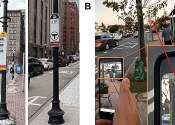Using artificial neural networks (ANNs) to predict bus arrival times
Accurately predicting the arrival times of buses is of key importance, particularly in hectic urban environments. Providing people with efficient and timely transportation can discourage them from using private vehicles, ...








